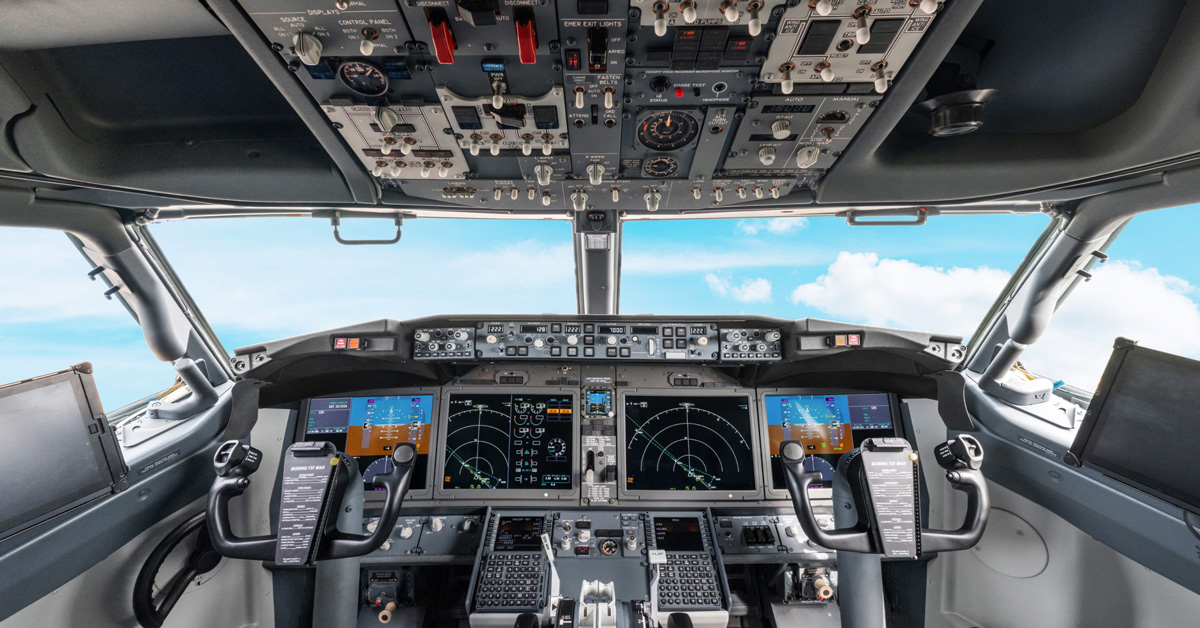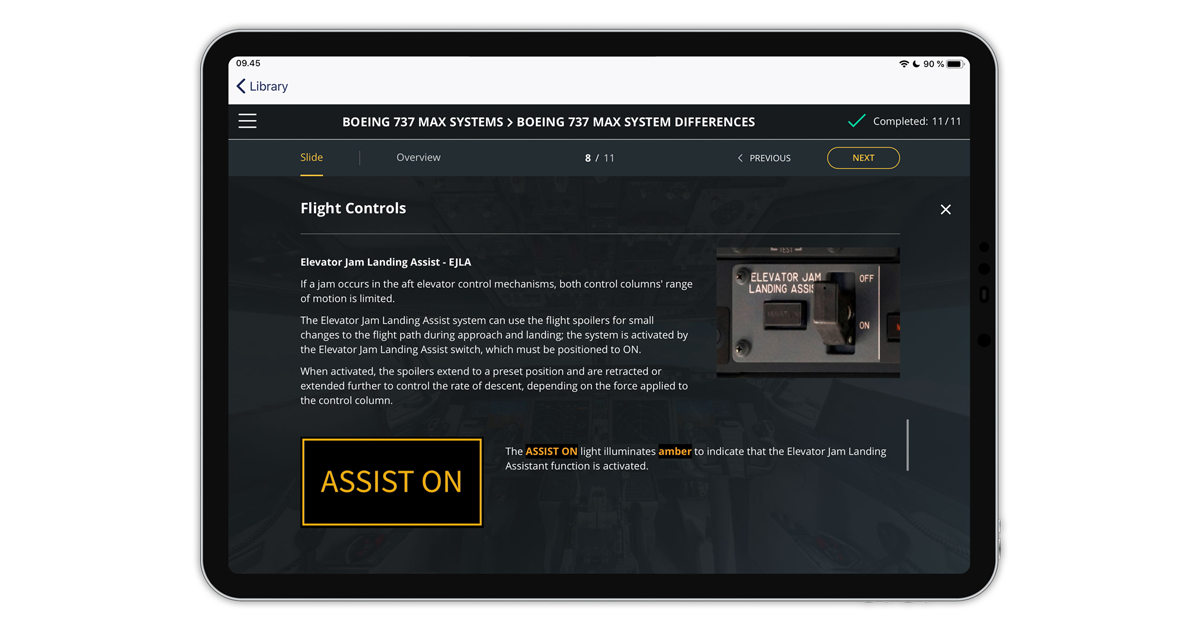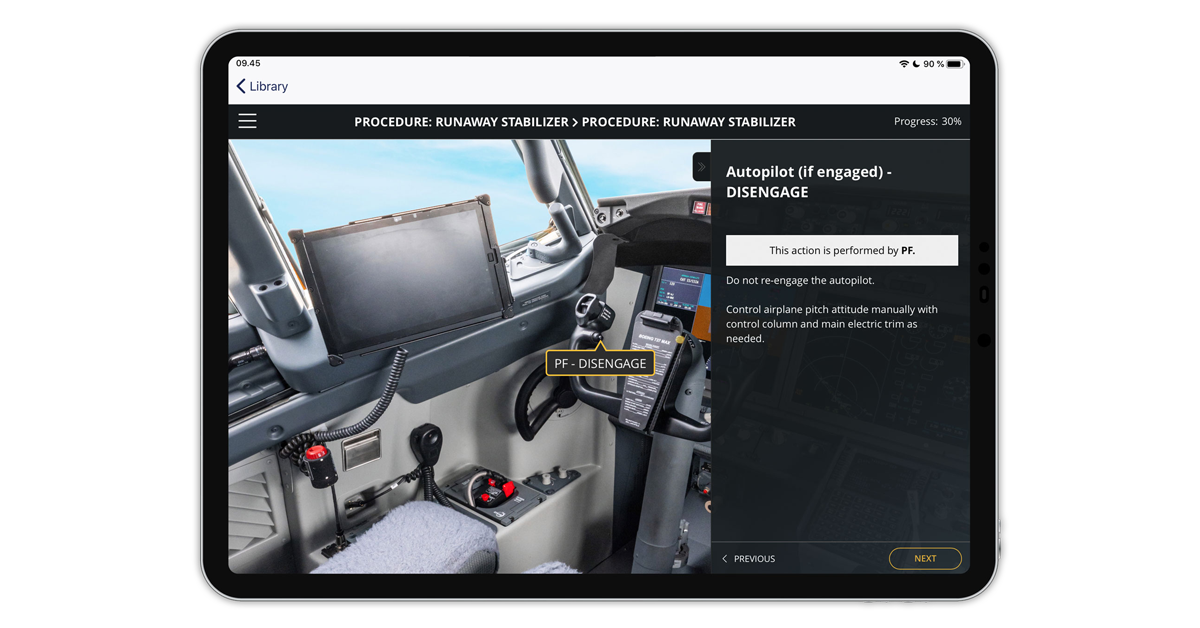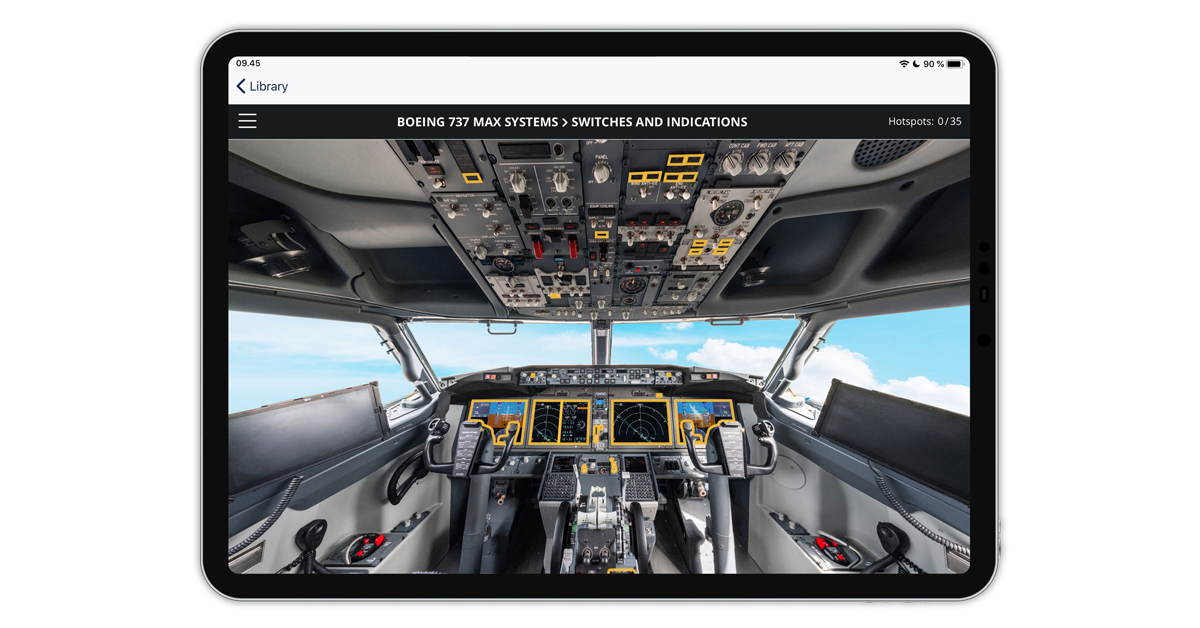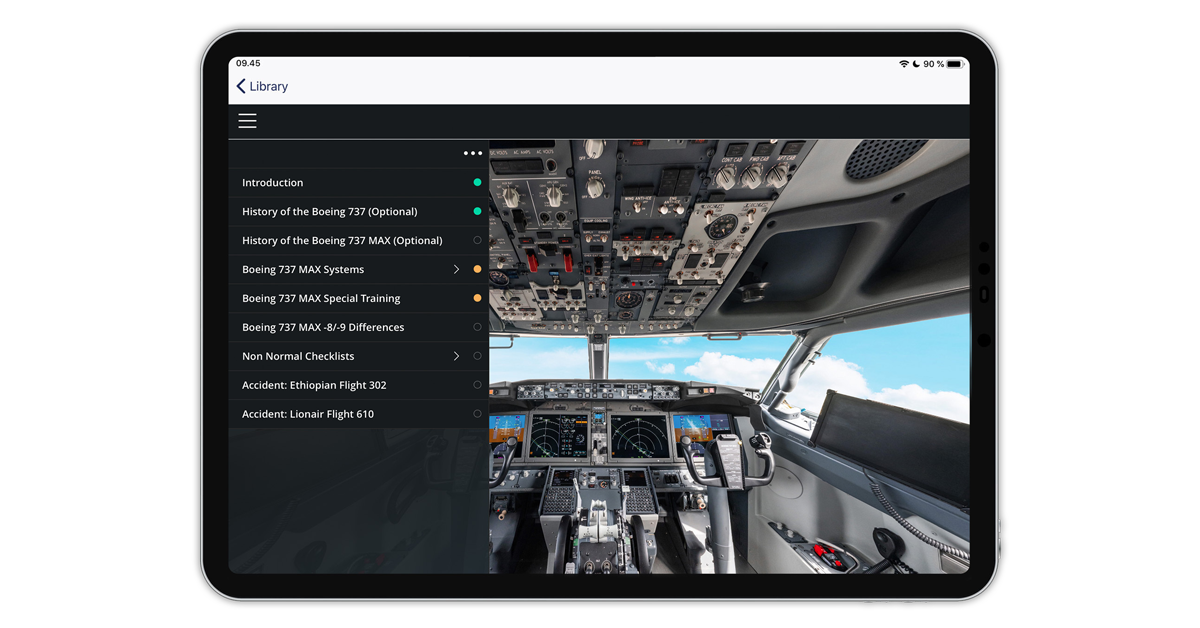Aviation eLearning is proud to announce the release of the new virtual Boeing 737 MAX Difference Course.
The new Boeing 737 MAX Difference Course was developed to help Boeing 737 NG pilots to get familiar with Boeing 737 MAX when transitioning from the NG to the MAX. The course is based on the technical differences outlined in the Boeing 737 MAX FCOM Volume 2 and Boeing 737 OSD – Operational Suitability Data, Flight Crew. The course is available for airlines and air operators as well as private users.
The course content is presented in a high quality virtual 360° cockpit environment, allowing pilots to explore the entire cockpit and zoom in to every button and switch. This unique feature facilitates deep learning and much better learner experience.
Virtual training is an engaging and motivating learning method.
See for yourself!
CLICK HERE to access the demo of the virtual Boeing 737 MAX Difference Course.
The Boeing 737 MAX Difference Course contains:
Pilots can learn about Boeing 737 MAX Systems by clicking hotspots that mark specific buttons and switches in the virtual MAX cockpit. Upon clicking, hotspots expand with detailed content. Non Normal Checklists guide pilots through the procedures step-by-step and locating specific actions to be taken in a particular procedure.

Train Smart
Allow your pilots to train the procedures in virtual aircraft that is always accessible.

Improve Pass Rates
Efficient preparation improves performance in simulator training session.

Reduce Costs
The course is designed to be completed in an average of 90 minutes. It is delivered entirely online and can be taken anytime and anywhere it suits the candidate. It runs on the Aviation eLearning Learning Management System (LMS) to track user’s progress and completion of the course. The course can be accessed on any modern mobile device or desktop computer. After completing the course, candidates must pass a test. After passing the test successfully, candidates receive a certificate.
This course complies with the requirements put forward by the U.S. Department of Transportation Federal Aviation Administration (FAA) – Flight Standardization Board Report, Revision 17, Date 16th of November 2020. The course complies with the requirements put forward by the European Union Aviation Safety Agency (EASA) – Notification of a Proposal to issue an Airworthiness Directive, PAD No.: 20-184, Date 24th of November 2020.
